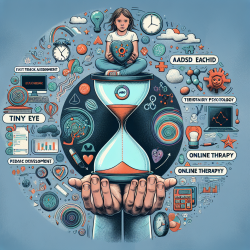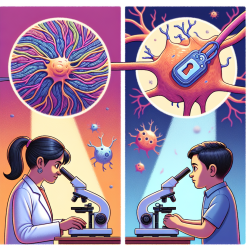Understanding the Autism Spectrum Rating Scales (ASRS)
The Autism Spectrum Rating Scales (ASRS) is a tool designed to help identify children with Autism Spectrum Disorder (ASD). It has been widely used in both clinical and educational settings, but recent research suggests that its effectiveness may be limited, particularly in distinguishing ASD from other clinical disorders. This blog explores the findings of a recent study titled "Psychometric Evaluation of the Autism Spectrum Rating Scales (6–18 Years Parent Report) in a Clinical Sample" and discusses its implications for practitioners.
Key Findings from the Study
The study evaluated the ASRS in a clinical sample of 490 children at a tertiary ASD-specialty clinic. The results were telling:
- The ASRS demonstrated favorable sensitivity but poor specificity, meaning it could identify children with ASD but struggled to differentiate them from those with other clinical disorders.
- True positive screening results were more likely for children with a multiracial background, while less likely for those with high social capital.
- The ASRS did not perform effectively in differentiating ASD from non-ASD clinical disorders.
Implications for Practitioners
For practitioners, these findings underscore the importance of using a multi-faceted approach when diagnosing ASD. While the ASRS can be a useful tool, it should not be relied upon in isolation. Instead, consider the following strategies:
- Incorporate a variety of screening and diagnostic tools, such as the Autism Diagnostic Observation Schedule (ADOS-2) and the Autism Diagnostic Interview-Revised (ADI-R).
- Engage in comprehensive parental interviews to gather detailed developmental histories and behavioral observations.
- Be mindful of demographic factors, such as race/ethnicity and social capital, which may influence screening outcomes.
Encouraging Further Research
The study highlights the need for further research, particularly in the context of hybrid telehealth and in-person diagnostic evaluations. The COVID-19 pandemic has shifted the landscape of ASD assessments, and understanding how tools like the ASRS perform in this new environment is crucial.
Researchers and practitioners are encouraged to explore the following areas:
- Conduct replication studies to validate the ASRS's effectiveness in diverse clinical settings.
- Investigate the impact of social and demographic factors on screening accuracy.
- Develop and test new screening tools that can better differentiate ASD from other disorders.
Conclusion
While the ASRS remains a valuable tool in the arsenal of ASD screening measures, its limitations must be acknowledged. By integrating multiple diagnostic approaches and continuing to research and refine our tools, we can improve the accuracy of ASD diagnoses and ultimately enhance outcomes for children.
To read the original research paper, please follow this link: Psychometric Evaluation of the Autism Spectrum Rating Scales (6–18 Years Parent Report) in a Clinical Sample.










